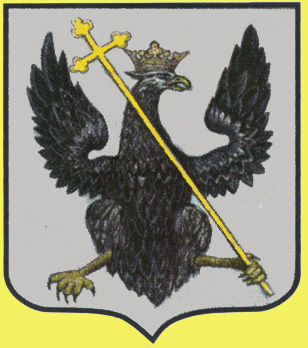|
Photo
number
|
Description
|
|
|
 |
Domes of Trinity Cathedral in
Trinity monastery
|
|
|
 |
Entrance gate to Trinity
Monastery (1775)
|
|
| |
 |
Entrance to Trinity Cathedral
|
|
| |
 |
Side view of Trinity Cathedral
|
|
| |
 |
View of Trinity Cathedral
|
|
| |
 |
Iconostasis in Trinity Cathedral
|
|
| |
 |
View of Trinity Cathedral
|
|
| |
 |
Trinity Cathedral in Trinity
Monastery
|
|
| |
 |
Vevedenski Refectory Church -
1677 - in the Trinity Monastery
|
|
| |
 |
Vevedenski Refectory Church in
Trinity Monastery, 1677.
|
|
| |
 |
Bell tower of Trinity Cathedral
and monastery, 58 meters - 1775
|
|
| |
 |
Two saints in niche on outside
wall of Trinity Cathedral
|
|
| |
 |
Trinity Cathedral, view of domes
|
|
| |
 |
Trinity Cathedral
|
|
| |
 |
Trinity Cathedral, view
|
|
| |
 |
Trinity Cathedral -
1679-1685.Ukrainian Baroque
|
|
| |
 |
Plaque at entrance of Illinsky
Church and Antony caves
|
|
| |
 |
Another plaque
|
|
|
 |
Cupola dome of belltower of
Illinsky Church
|
|
|
 |
Iconostasis in Illinski Church
|
|
|
 |
Iconostasis in Illinsky Church
|
|
|
 |
Illinsky Church and bell tower,
founded in 1069, entrance to Antony caves monastery
|
|
|
 |
Illinsky Church and bell tower
|
|
|
 |
Deep inside Antony caves
monastery
|
|
| |
 |
Deep inside Antony caves
monastery
|
|
| |
 |
Micha and Tanya inside Illinsky
Church
|
|
|
 |
Inside Illinsky Church, entrance
to caves
|
|
|
 |
Plaque listing architecture -
Spaso Cathedral, Boris and Gleb Cathedral, Collegium, Trinity Cathedral
|
|
|
 |
St Catherine Church
|
|
| |
 |
St Catherine Church
|
|
|
 |
View of rampart of fortress from
below
|
|
|
 |
On rampart of fortress, George
and Victor discussing cannon - St Catherine Church in background
|
|
|
 |
On fortress rampart view toward
river.
|
|
| |
 |
Monastery beyond Detenets park
|
|
| |
 |
Colegium - museum - 1710
|
|
|
 |
Colegium - museum - 1710
|
|
|
 |
Silver door
|
|
|
 |
Corner Tower of
Spaso-Preobrazhensky Cathedral
|
|
|
 |
Front of Spaso-Preobrazhensky
Cathedral on right, Boris and Gleb Cathedral in center
|
|
|
 |
Corner tower and door of
Spaso-Preobrazhensky Cathedral
|
|
|
 |
View of both corner towers and
Central dome of Spaso-Preobrazhensky Cathedral
|
|
|
 |
Detail of Spaso-Preobrazhenski
Cathedral
|
|
|
 |
Front of Spaso-Preobrazhenski
Cathedral
|
|
|
 |
Corner tower of
Spaso-Preobrazhenski Cathedral
|
|
|
 |
Wall of Boris and Gleb Cathedral
|
|
|
 |
Entrance
|
|
|
 |
Central dome of Boris and Gleb
Cathedral
|
|
|
 |
Boris and Gleb Cathedral
|
|
|
 |
Detail of Boris and Gleb
Cathedral, founded 1123 as part of monastery
|
|
|
 |
Boris and Gleb Cathedral, burned
in 1511 and taken over by Dominicans
|
|
|
 |
Central drum and cupola dome of
Pyatnytska Church
|
|
|
 |
Facade of Pyatnytska Church -
showing elaborate style of original brickwork
|
|
|
 |
Side view of facade of
Pyatnytska Church.
|
|
|
 |
Detail Pyatnytska Church - 12th century,
repeatedly destroyed by Tatars, Poles and Germans rebuilt in 1962.
|
|
|
 |
Front view of Pyatnytska Church
|
|
|
 |
Pyatnytska (St Paraskeva) Church - rebuilt in
1962 after destruction in WorldWar II
|
|
|
 |
Memorial Statue in honor of warriors,
partisans and people of Chernihiv individual on right is medieval warrior
|
|
|
 |
Statue medieval warrior at Chernihiv
|
|
|
|
|
|


